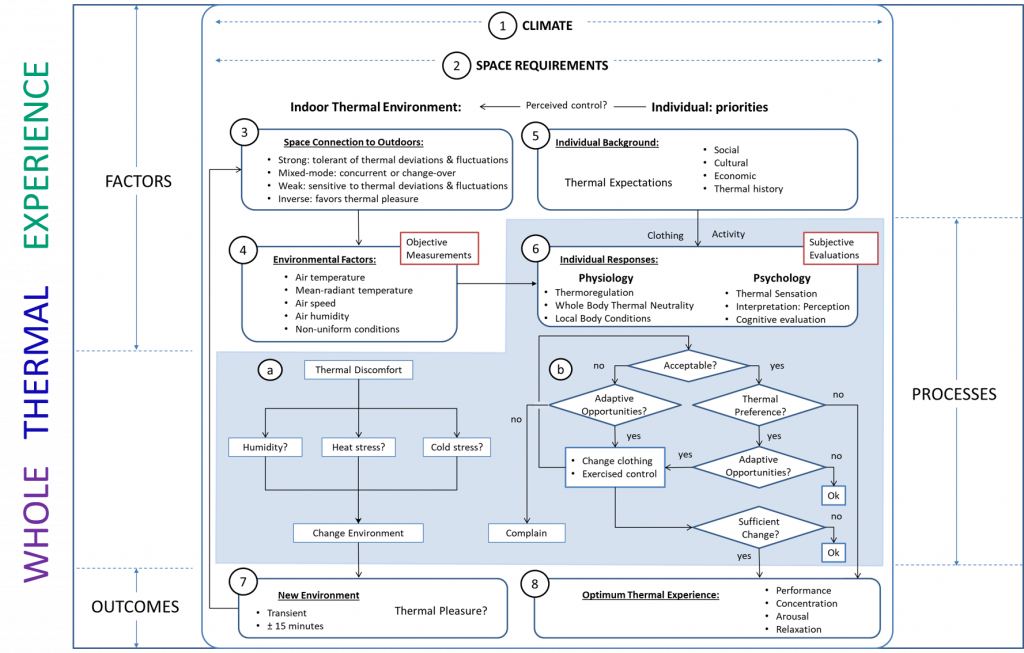Surveys in commercial buildings in the US show that thermal environmental conditions are far from being satisfactory [1]. Plenty of research evidence confirms that poor indoor environmental conditions negatively affect performance and well-being. Furthermore, dissatisfied people use more energy: use personal heaters, open windows, adjust thermostat with energy-intensive heating/cooling to compensate for poor thermal conditions.
- Karmann C, Schiavon S, and Arens E. (2018). Percentage of commercial buildings showing at least 80% occupant satisfied with their thermal comfort, Proceedings of the 10th Windsor Conference: Rethinking Comfort, Windsor, UK, April 2018.
Building Environmental Systems & Technologies for Thermal Comfort
An understanding of the required comfort temperatures for the local climate will help tailor the design and operation of buildings to provide those temperatures without the unnecessary use of mechanical energy.
Building environmental design and systems/technologies integration should strive for coupling the built environment to the local climate through passive and adaptive methods and technologies, to provide opportunities for people in a building to thermally adapt to the prevailing local climate conditions, and accessibility to low-energy comfort devices.
Thermal Comfort: A Whole Thermal Experience
Thermal comfort can be characterized as “a whole thermal experience”, affected by a variety of environmental and individual factors. Starts with 1) the local climate characterization and 2) the owner’s building priorities for the building/space. 3) The indoor thermal environment is described based on its connection to outdoors: a strong connection is seen in naturally ventilated spaces; a weak connection is seen in mechanically conditioned spaces, a mixed-mode connection is used in spaces that operate under mixed-mode operation, either concurrently or in change-over mode; and an inverse mode (“alliesthetic”) connection is seen in mechanically conditioned spaces that are over-cooled in hot climates and overheated in cold climates. The type of connection can be seasonal. For example, a building or a space can be designed to have a weak connection to outdoors in winter and a strong one in the summer. 4) The resulting indoor space thermal conditions, will trigger occupant responses, 5) consistent with the individual’s background, involving 6) coupled physiological and psychological mechanisms and resulting in an occupant evaluation of the environment. These conditions may lead to a) thermal discomfort, which is clearly inadequate for occupancy and will force either a drastic 7) change in the environment, change in clothing or moving to another space; which will result in momentary thermal pleasure as thermal discomfort is decreased; or b) different levels of thermal acceptability and satisfaction with the environment. If an occupant is fully satisfied with those conditions, or if s/he feels the can be improved, and opportunities for improving them are provided, then 8) optimal thermal comfort conditions with be achieved, in line with the intent for the building and its spaces.
